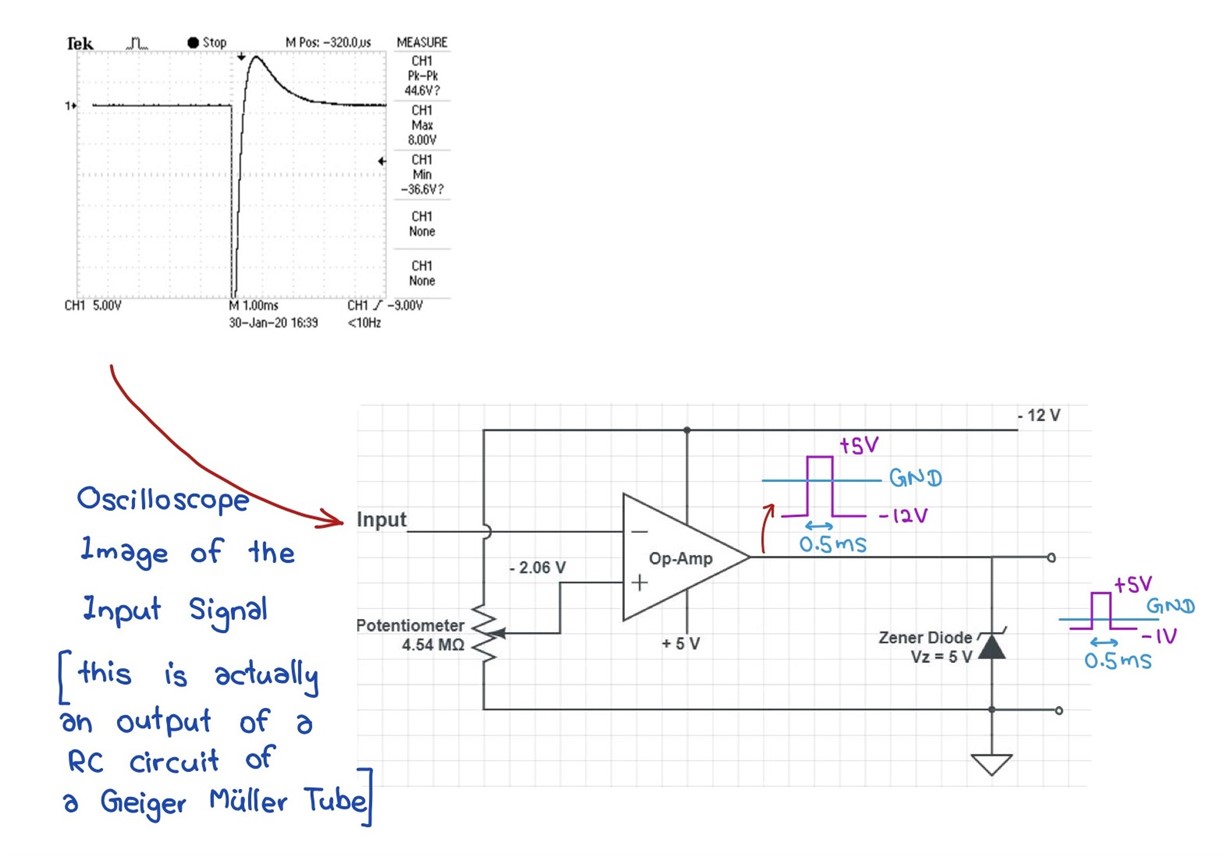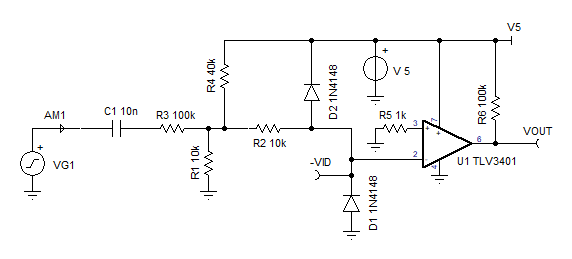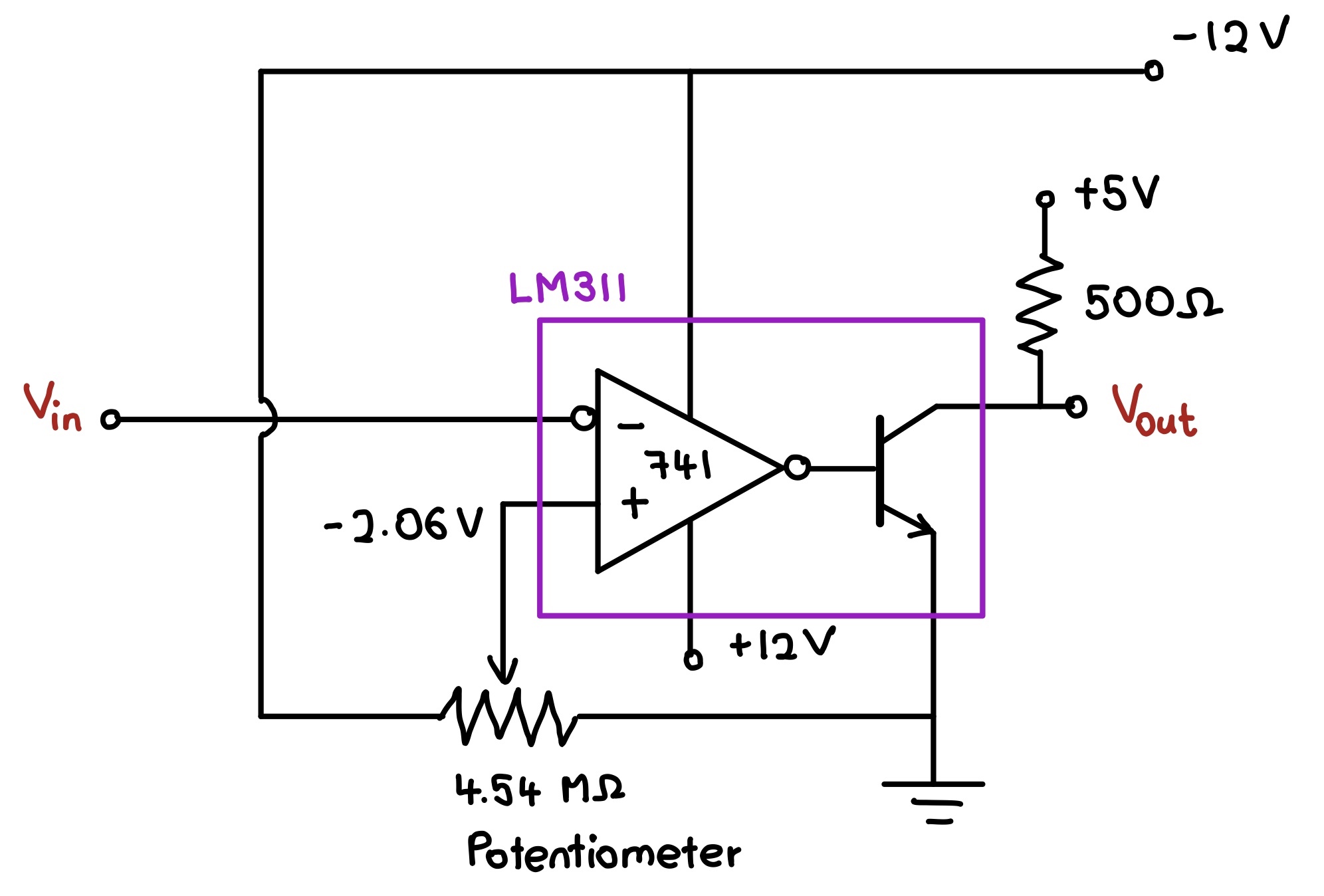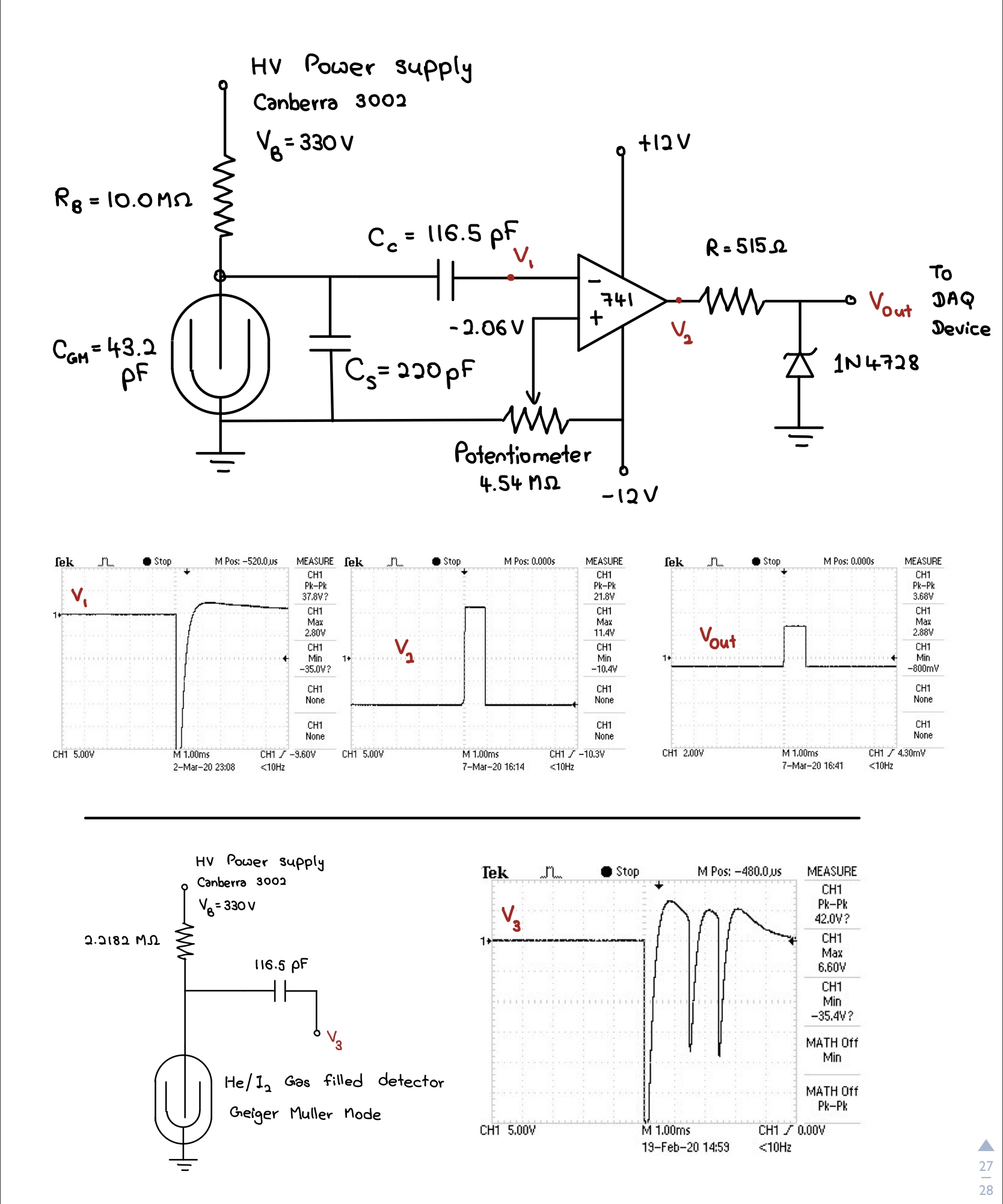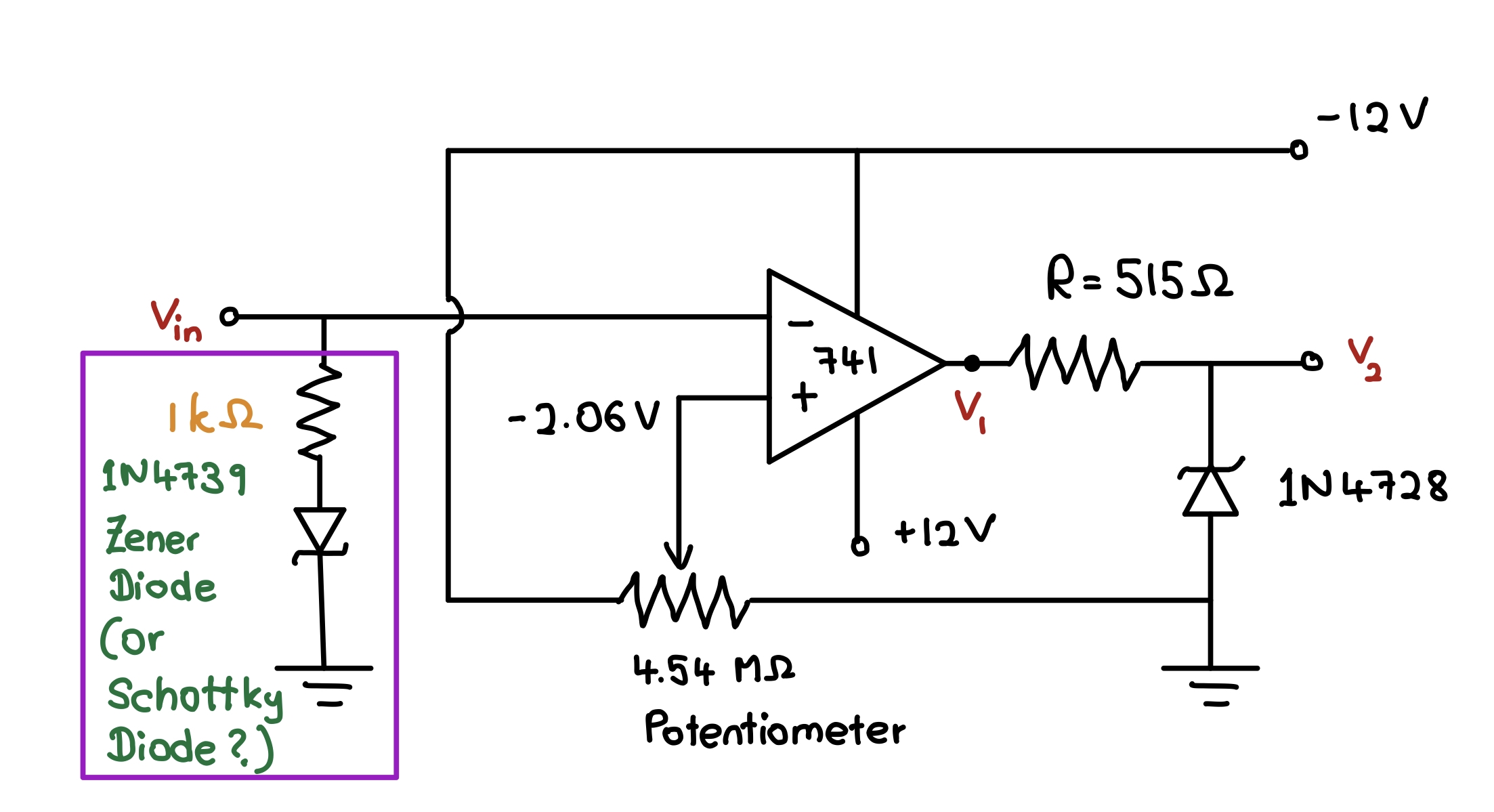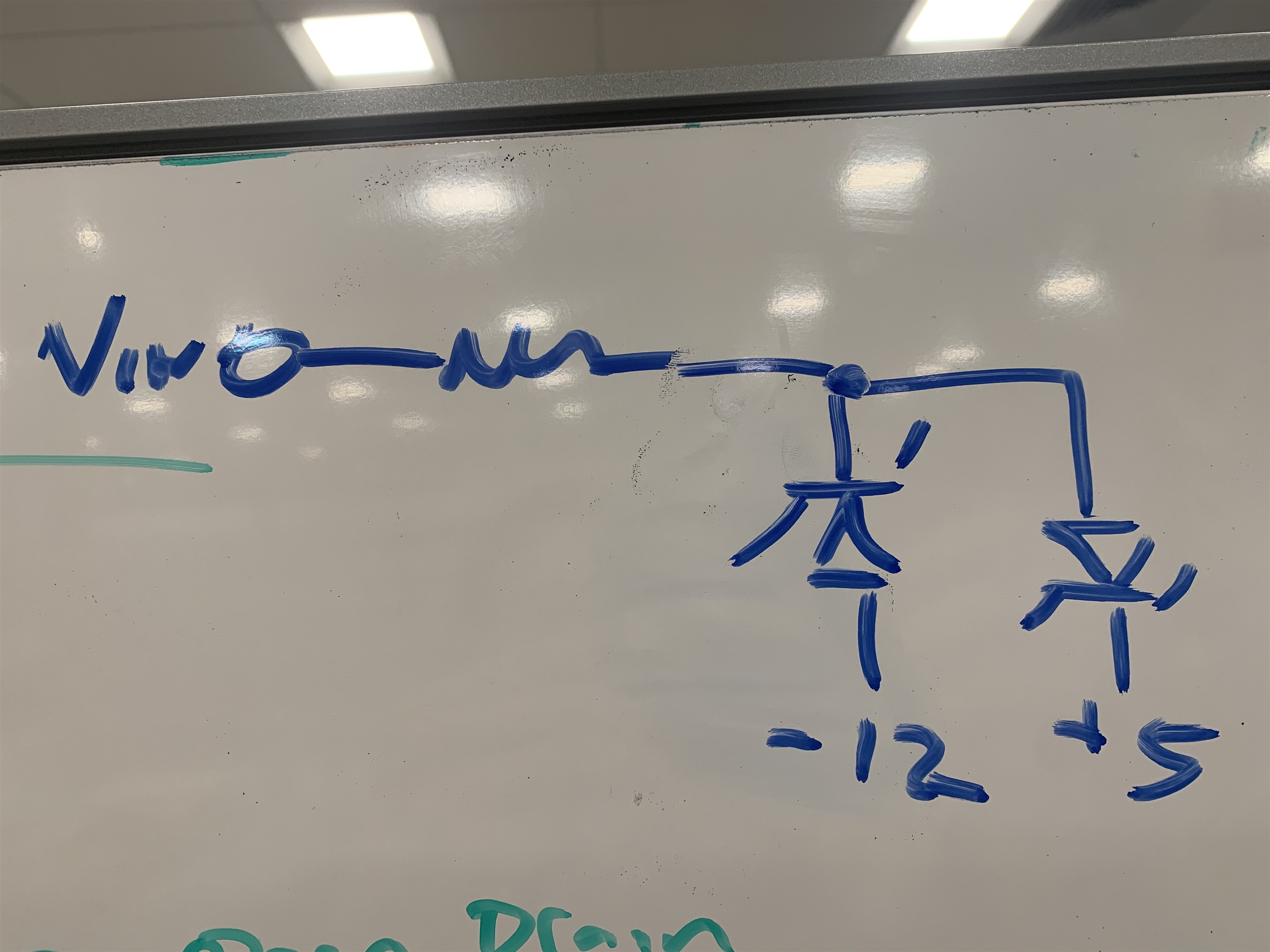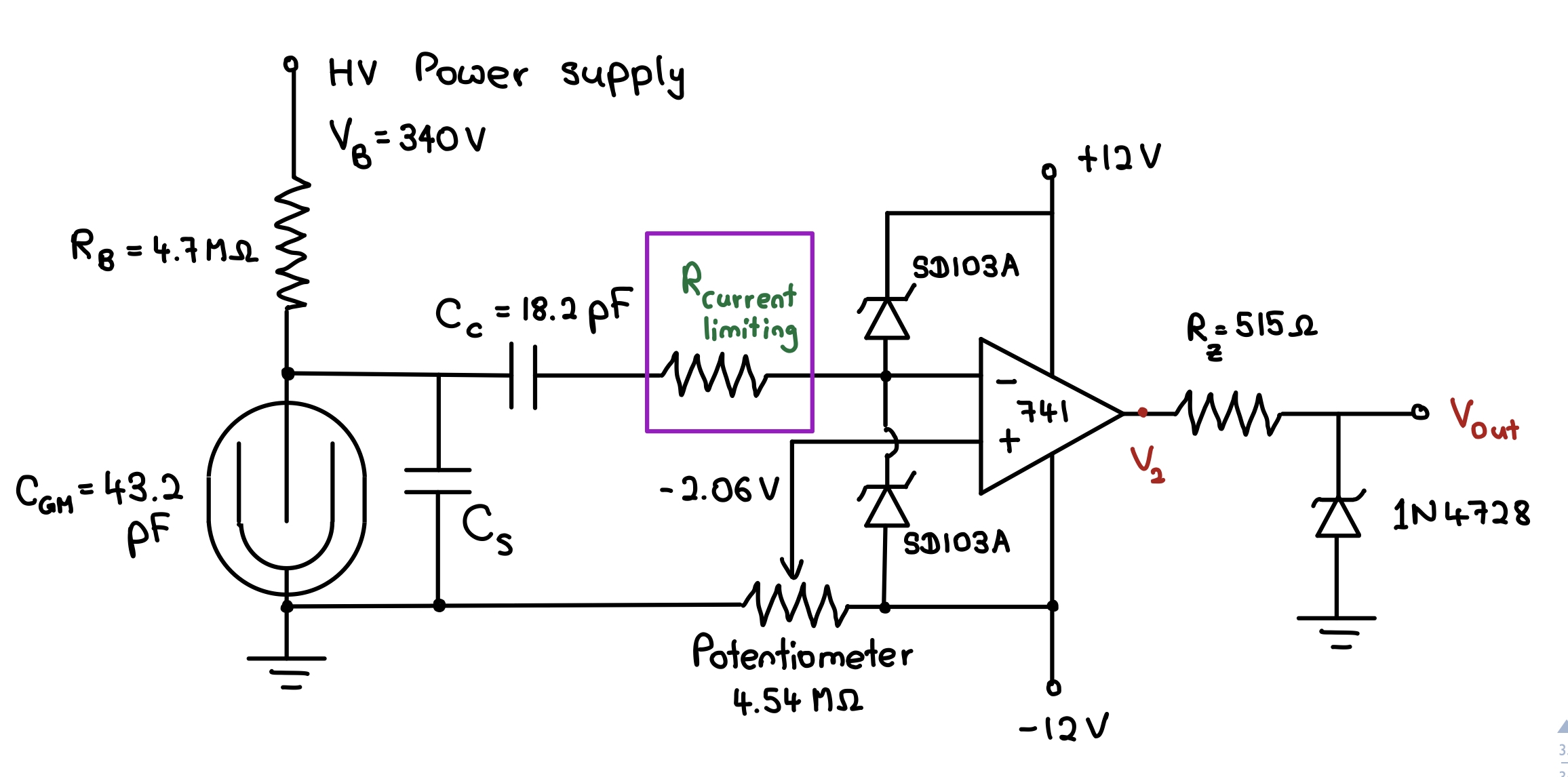Other Parts Discussed in Thread: TLV3401, TLV1701, LM311
Hi! I am currently working on designing a Compactor Circuit for a pulse signal from GM Tube as shown in Oscilloscope! It would be grateful, if you could help me to figure out the best Part number for the Op-Amp IC and the Zener Diode for the circuit below. The specialties I am looking from the Op-Amp IC is it can detect 500 microseconds pulses and getting a TTL pulse for the computer with ultra low noise (Since TTL pulse output, I am wondering to supply +5V for +Vcc of the IC ). The purpose of the Zener Diode for shapping the pulse for TTL output. I worked with 741 series ICs, But I was suspecting about the noise and setting +5V for +Vcc!
I would appreciate any advice.
Thank you very much in advance for your help!


